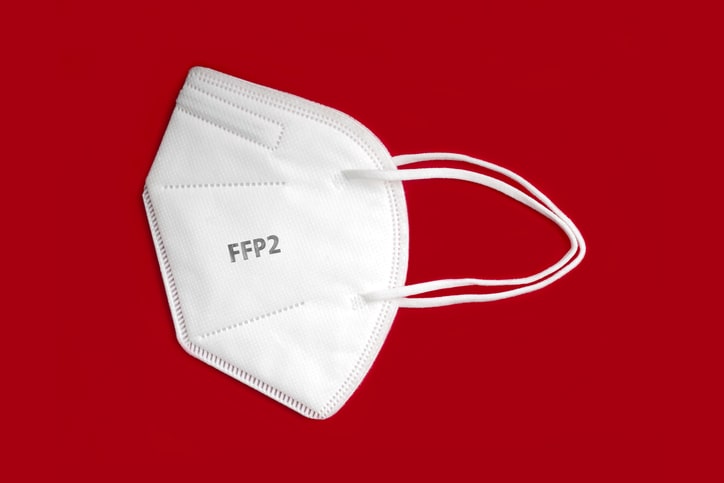
Patients with end-stage renal disease
(ESRD) are at increased risk of morbidity and mortality associated with
influenza compared with individuals in the general population. Patients with
ESRD have an impaired innate and adaptive immune system, including defects in
complement activation and B- and T-cell function, adding to the increased risks
for complications from influenza, mortality, and increased healthcare costs.
The recommendation from the Centers for Disease Control and Prevention (CDC) strongly
recommend annual influenza vaccinations for patients with ESRD.
At present, there are several types
of influenza vaccines in the United States, including the standard-dose vaccine
(SDV) and the high-dose vaccine (HDV). Standard practice in dialysis clinics is
administration of the trivalent, and more recently quadrivalent, inactivated
seasonal SDVs. In 2009, a trivalent HDV was licensed by the US FDA for use
among adults ≥65 years of age; the HDV contains the same three strains as the
SDV, but has more antigen than standard vaccines (60 vs 15 mg per strain). Over time, use of the
HDV among patients receiving maintenance dialysis has increased.
A small observational study conducted
among the dialysis population demonstrated that the HDV was more effective in
preventing all-cause hospitalization during the 2016 to 2017 influenza season.
However, the results were limited by the small sample size, adjustment for a
small set of confounders, and the lack of outcomes related to influenza. Anne
M. Butler, PhD, and colleagues recently conducted a cohort study to examine
the effectiveness of standard-dose versus high dose influenza vaccine among
patients on dialysis. Results were reported in the American Journal of
Kidney Diseases [2020;75(1):72-83].
Patients with chronic kidney disease
receiving in-center maintenance dialysis during 2009 to 2015 were identified
using data from the US Renal Data System. The researchers constructed yearly
cohorts for five individual influenza seasons: 2010 to 2011, 2011 to 2012, 2012
to 2013, 2013 to 2014, and 2014 to 2015. Eligible patients were ≥18 years of
age with ESRD who had initiated hemodialysis at least 9 months prior to the
index date. Additional inclusion criteria were receipt of continuous
hemodialysis for 3 months immediately prior to vaccination and Medicare as a
primary insurance payer.
There were three primary clinical
outcomes of interest: (1) all-cause mortality; (2) the first occurrence of
hospitalization for influenza or pneumonia; and (3) the first occurrence of
influenza-like illness (ILI).
Patients were eligible for inclusion
in multiple yearly cohorts. The unit of analysis was the influenza
patient-season. Propensity score weighting of Kaplan-Meier functions were used
to estimate risk differences and risk ratios. A wide range of covariates were
identified during the 6-month baseline period, including demographic
characteristics (age, sex, race, dual-eligible for Medicaid, region, and year),
clinical characteristics (cause of ESRD and duration of dialysis), dialysis
facility characteristics (affiliation, type, profit status, and size), and
comorbid conditions and procedures. Other covariates included preventive health
services (other vaccinations and health screenings), health care utilization,
and frailty. Timing of administration of the influenza vaccine was categorized
as August or September versus October through the start of the influenza
season.
Following application of inclusion
and exclusion criteria, the researchers identified 255,281 eligible adults who
contributed 507,552 unique influenza patient-seasons. The primary analysis
included 225,215 adults ≥65 years of age; of those, 97.4% (n=219,439) of eligible
vaccinations were SDV, and the remaining 2.6% (n=5776) received HDV. All HDV
were trivalent; 76.7% of SDV were trivalent
and 23.3% were quadrivalent.
Mean age was slightly older among
those who received the HDV compared with those who received SDV (75.8 years vs
74.6 years). HDV administration was less common among patients who were black
or other race, were dual-eligible for Medicaid, were on dialysis for >3
years, or resided outside of the Midwest. The prevalence of comorbid conditions
was higher in recipients of HDV; frailty indicators were similar between those
who received SDV and those who received HDV. Recipients of HDV were more likely
to receive preventive healthcare such as diabetic eye examinations, lipid
testing, and cancer screenings.
After accounting for the competing
risk of death for nonmortality outcomes, for each outcome of interest the
weighted risks for HDV and SDV were similar. In the weighted analyses, there
were similar associations between vaccine dose and risk for mortality (risk
difference, –0.08%; 95% confidence interval [CI], –0.85% to 0.80%),
hospitalization due to influenza or pneumonia (risk difference, 0.15%; 95% CI,
–0.69% to 0.93%), and ILI (risk difference, 0.00%; 95% CI, –1.50% to 1.08%).
Risks for mortality, hospitalization
for influenza or pneumonia, and ILI within subgroups defined by influenza
season, age group, dialysis vintage, month of influenza vaccination, and
vaccine valence were generally similar between HDV and SDV recipients
throughout the influenza season, with a few exceptions. In the 2010 to 2011
season, there was a higher risk for hospitalization among patients who received
the HDV compared with patients who received the SDV (risk difference, 2.85%;
95% CI, 0.59% to 5.86%). There were no differences in risk in any of the other
four seasons.
For both hospitalization and ILI
outcomes, the risk among HDV versus SDV recipients ≥65 years of age was higher;
the risk was lower among HDV versus SDV recipients 75 to 84 years of age. There
was no difference in risk among those <65 years of age or ≥85 years of age.
There were some limitations to the
findings cited by the authors, including the observational design of the study
that did not involve randomization of the exposure, only accounting for
baseline characteristics measured prior to vaccination, the requirement of
survival until 9 months following initiation of dialysis, and basing the study
primarily on administrative billing claims data.
In summary, the researchers said,
“Our large comparative study failed to demonstrate that HDV has superior
effectiveness compared to SDV for preventing all-cause mortality and
influenza-related outcomes among patients receiving maintenance hemodialysis. Given
the findings of our population-level study, along with the substantially higher
cost and side-effect profile of HDV compared to SDV, it appears that HDV should
not conclusively be considered the standard of care at the present time for
influenza immunization of patients treated by maintenance hemodialysis. The
findings of our population-level study should not be interpreted to discourage
influenza vaccination in the dialysis population. Rather, dialysis patients
should continue to receive annual influenza immunization per CDC guidelines. In
addition, future studies of alternative strategies (eg, booster doses) and alternative
vaccine production technologies (eg, adjuvanted or cell-based vaccines) are
warranted because there remains a need for improved influenza prevention
efforts in this population.”
Takeaway Points
- Researchers conducted a cohort study
to compare the effectiveness of standard-dose influenza vaccine (SDV) with
high-dose influenza vaccine (HDV) in patients on maintenance hemodialysis. - Outcomes of interest were all-cause
mortality, hospitalization for influenza or pneumonia, and influenza-like
illness during the influenza season. - The findings suggested that the HDV
does not provide additional protection beyond that of the SDV for adults on maintenance
hemodialysis.







 © 2025 Mashup Media, LLC, a Formedics Property. All Rights Reserved.
© 2025 Mashup Media, LLC, a Formedics Property. All Rights Reserved.